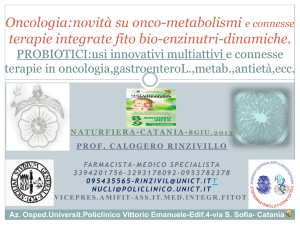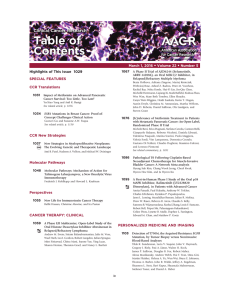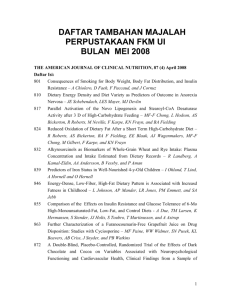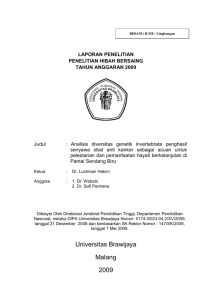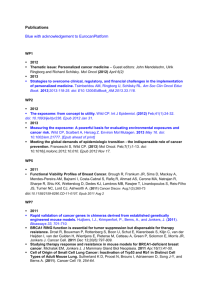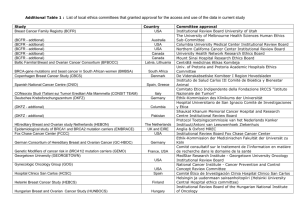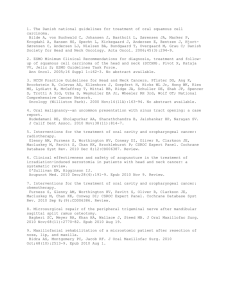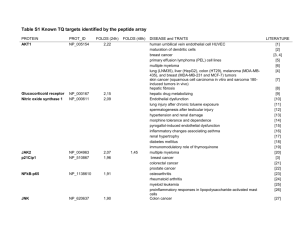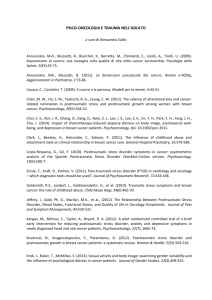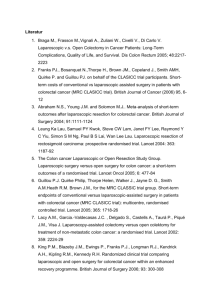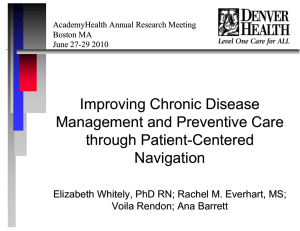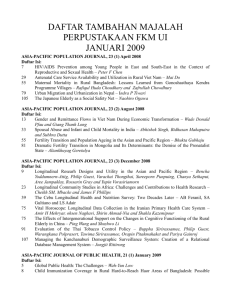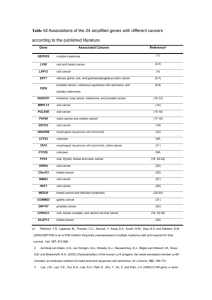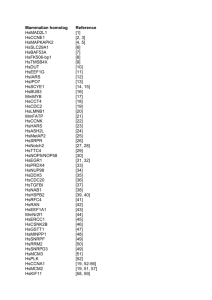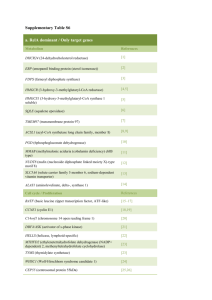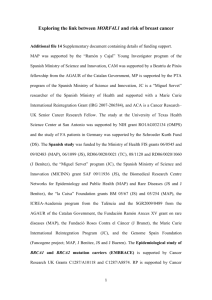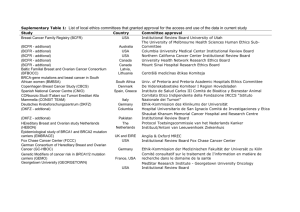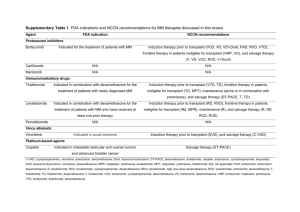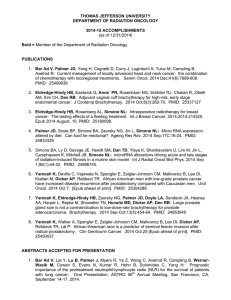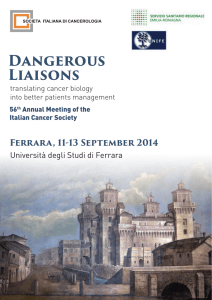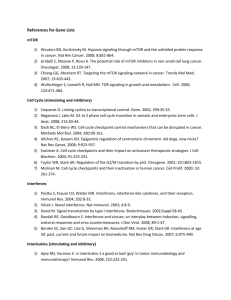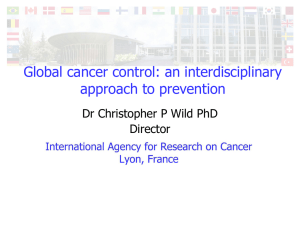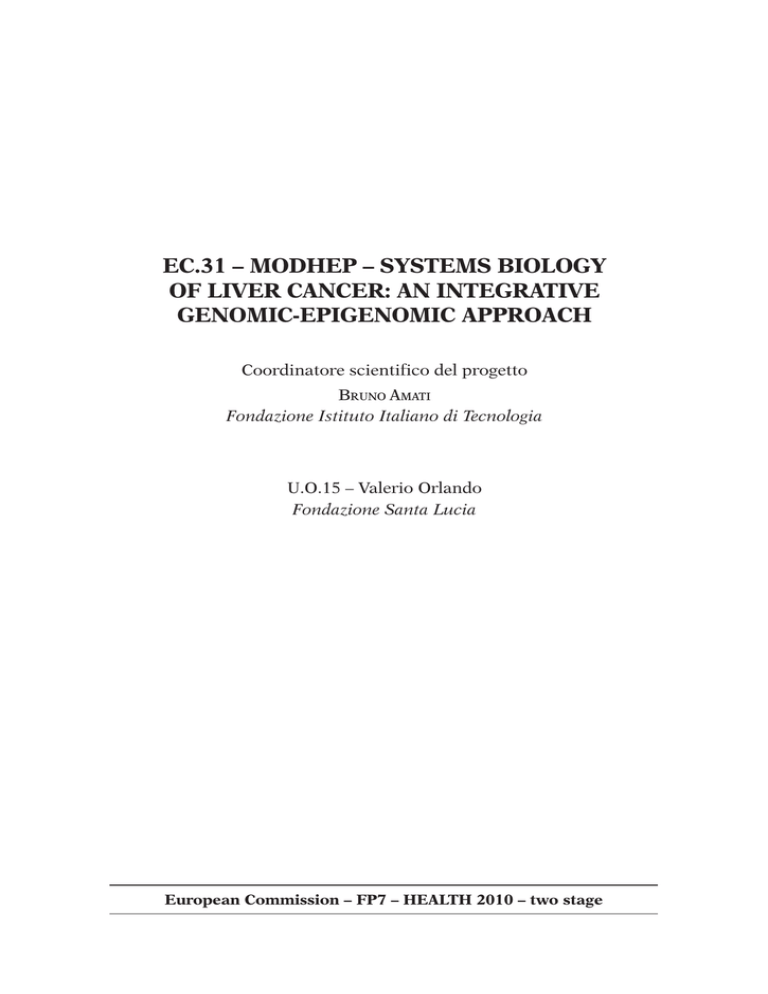
EC.31 – MODHEP – SYSTEMS BIOLOGY
OF LIVER CANCER: AN INTEGRATIVE
GENOMIC-EPIGENOMIC APPROACH
Coordinatore scientifico del progetto
BRUNO AMATI
Fondazione Istituto Italiano di Tecnologia
U.O.15 – Valerio Orlando
Fondazione Santa Lucia
European Commission – FP7 – HEALTH 2010 – two stage
Sezione III: Attività per progetti
LIST OF BENEFICIARIES
1 – Fondazione Istituto Italiano di Tecnologia, Italy (IIT): Bruno Amati
2 A – Institut Curie France/Genetic and developmental biology (CURIE-A):
Edith Heard
2 B – Institut Curie France/Nuclear dynamics and genome plasticity (CURIE-B):
Geneviève Almouzni
3 – Medical Research Council, United Kingdom (MRC): Wendy Bickmore
4 – Koninklijke Nederlandse Akademie Van Wetenschappen, Netherlands
(KNAW): Wouter L. de Laat
5 A – Fondazione Telethon/Institute of Epigenetics and Genome reprogramming,
Italy (FTELE-A): Valerio Orlando
5 B – Fondazione Telethon/Institute of Genetics and Medicine, Italy (FTELE-B):
Diego di Bernardo
6 A – The Roslin Institute-The University of Edinburgh, United Kingdom (UEDIN-A):
Geoffrey Faulkner
6 B – The Institute of Genetics and Molecular Medicine-The University of Edinburgh,
United Kingdom (UEDIN-B): Wendy Bickmore
7 – The Babraham Institute, United Kingdom (BABRAHAM): Peter Fraser
8 – Weizmann Institute of Science, Israel (WIZ): Amos Tanay
9 – Riken - The Institute of Physical and Chemical Research, Japan (RIKEN):
Piero Carninci
10 – Institut Pasteur, France (IP): Yu Wei
11 – Institut National de la Sante et de la Recherche Medicale, France (INSERM):
Didier Samuel
12 – Biobyte Solutions GmbH, Germany (BIOBYTE): Ivica Letunic
13 – ACIES Consulting Group SAS, France (ACIES) (NOVAMEN):
Marie-Laure Muiras
14 – Mater Medical Research Institute, Australia (MMRI): Geoffrey Fauklner
15 – Fondazione Santa Lucia, Italy (FSL): Valerio Orlando
16 A – Istituto Europeo di Oncologia SRL/Oncogenes, chromatin and cell cycle
control, Italy (IEOA): Bruno Amati
16 B – Istituto Europeo di Oncologia SRL/Transcriptional control in inflammation
and cancer, Italy (IEOB): Gioacchino Natoli
16 C – Istituto Europeo di Oncologia SRL/Bioinformatics and evolutionary
genomics of cancer, Italy (IEOC): Francesca Ciccarelli
17 – King’s College London, United Kingdom (KCL): Francesca Ciccarelli
ABSTRACT
Cancer is a complex disease involving multiple genetic and epigenetic events
occurring, and influencing each other, over a long period of time. Understanding
cancer, and ultimately developing effective targeted therapies, will therefore
require that mutations and epigenetic alterations be systematically investigated
during the multiple stages of disease development, from identifiable pre-
522
2013
EC.31 – MODHEP – Systems biology of liver cancer...
neoplastic phases to overt cancer. Until now, no systematic effort has been
undertaken to investigate these multiple layers of genome organization and
function during cancer development. MODHEP aims at providing a 360°
understanding of liver cancer, one of the most common types of tumors and,
because of the homogeneity of the hepatic tissue, the most experimentally
tractable one.
The consortium brings together elite European scientists in the fields of
genetics, chromatin regulation, genomics, liver cancer, computational and systems
biology. This combination of skills will allow us to investigate and model at
unprecedented resolution the chain of events leading from environmental
perturbations and the occurrence of driver mutations to preneoplastic disease and
cancer. Our experimental plan reflects some grounded assumptions:
1. Cancer cannot be modeled without detailed information on the preneoplastic stages of disease.
2. Genetic heterogeneity in humans would make systems-level modeling non
realistic from a practical point of view. Both of these limitations are bypassed by
the use of well-defined mouse models, followed by evaluation of the main
conclusions in clinical samples.
3. Many early stage driving events in cancer represent epigenetic alterations,
which are invisible to classical genetic analysis, and are confounded by secondary
and tertiary events in established tumors.
Our approach will enable the identification of therapeutically relevant earlystage genetic and epigenetic alterations and the definition of their interplay in
tumor development and maintenance.
Website: www.modhep.eu
2013
523

